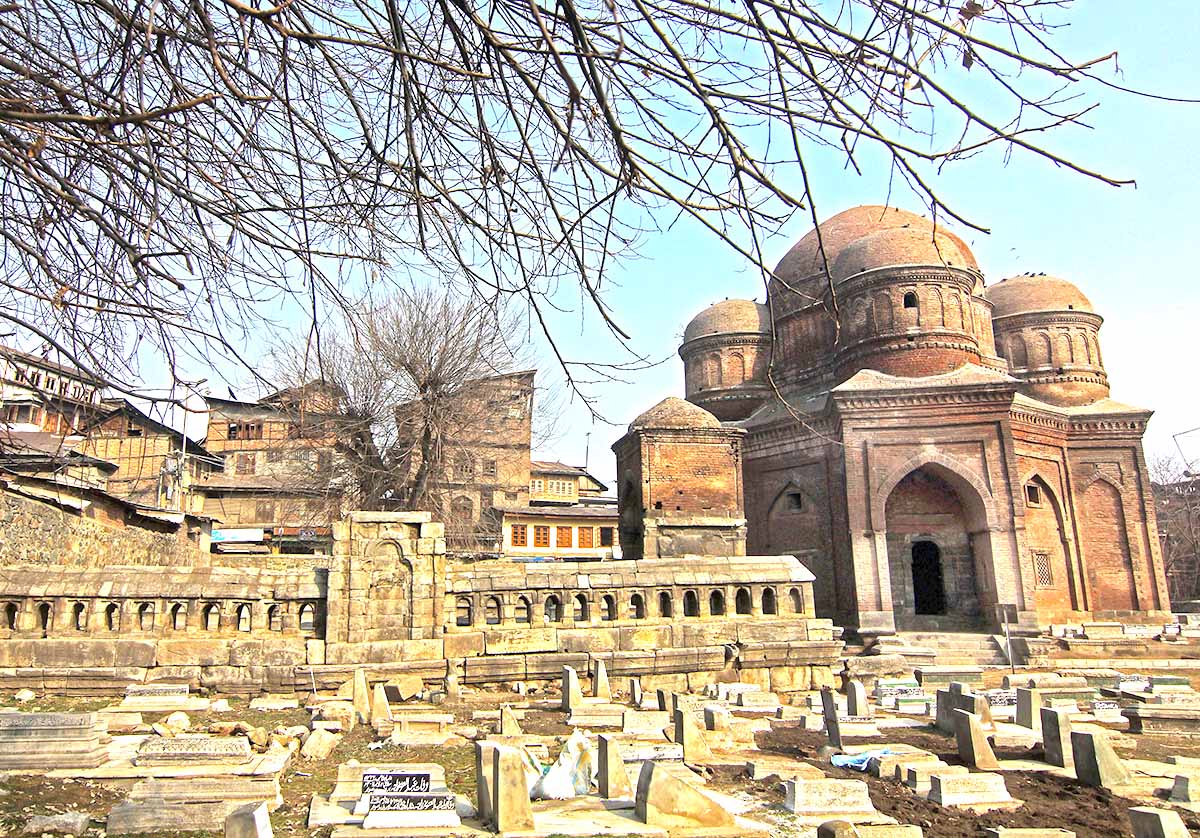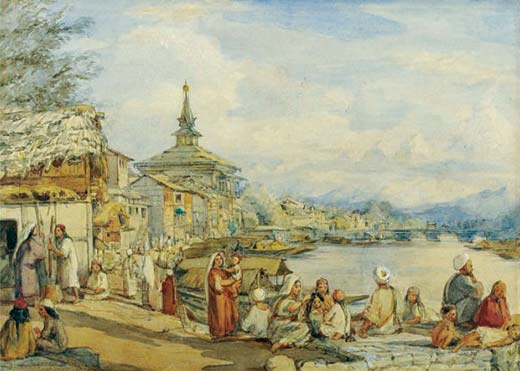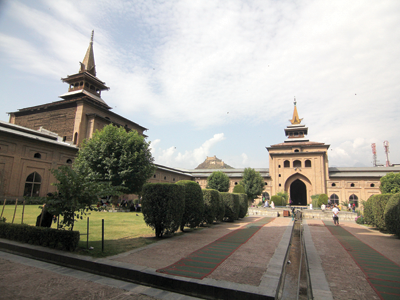by Roshiba Munir Khan
Have you ever imagined our Sheher-e-Khaas being nominated as a World Heritage Site, getting worldwide recognition and boost on a global scale! It won’t just take Kashmir and its rich heritage on International platforms but also help in further protection and revival of similar areas, preserving our heritage to a level that none can disturb for ages to come.

“He who denies his heritage has no heritage”
Kahlil Gibran
We are ready to give up on the inherited property while reaching out for distant cultures. Heritage doesn’t mean a mere single significant old structure or a dying art form, but it comprises of the entire establishment that made way for modern amenities. We as a civilization have failed to address the issues faced by our heritage. Nor have we been able to find substantial solutions endorsing it as an inclusive component of development. Heritage is misconstrued as anti-development, hampering the growth of the contemporary world, whereas it’s an integrated part of any developed nation that cherishes and preserves the essence of its legacy. Denial of the past is as good as being in denial of our own existence giving rise to an identity crisis.
Talking about Kashmir and its rich culture, the responsibility on the bearers of its heritage is a matter of prime precedence. There are various agencies working towards safeguarding heritage properties in Kashmir while restoring them. But the number of these properties is as meagre as a bunch of hair strands compared to the vastness of its presence. If we take a closer look at the city of Srinagar the old city commonly known as “downtown” and popularly called as Sheher-e-Khaas (a city out of the ordinary) is an area that needs major attention by way of an integrated heritage development planning for its resurgence.
Sheher-e-Khaas is an old settlement established on the banks of the river Jhelum connected to the extended city through seven bridges known as kadals, in different directions on its periphery. The bridges date back from the seventeenth and twentieth century, constructed over different periods. In early times the entire population resided within the limits of Sheher-e-Khaas with commercial activities taking place in designated areas serving as a trade hub.

Today, as we take a stroll down the lanes and by-lanes of this old gem all we spot, is abandoned structures and sparsely populated zones with lost charm. The reason is a drastic shift of a large population towards suburbs, making way for vacant buildings losing identity. In some cases, old houses have been brutally razed to the ground allowing construction of an odd concrete structure that destroys the frame of the built environment. It might sound absurd as everyone wants to upgrade themselves. But there has to be a proper way of bringing about change while maintaining the legacy. This negligence and indifference towards the city that gave distinct feature to Srinagar can push us into irrevocable darkness of the vanished character. Shifting habitat is a natural phenomenon of the human race but leaving the once resided habitat to meet its fate by the dust of time is a sign of disregard for one’s origin. The entire old town is slowly converting into a ghost-city that will soon die a neglected death.
The number of organizations worked on beautification and development of the old city while making plans for its up-gradation but it needs a thoughtful implementation with strong guidelines to follow. Had it not been for rigorous heritage regulations and by-laws cities, towns and countries with UNESCO World Heritage tags would not exist. It is with the enforcement of these laws and regulations one can preserve the inherent fabric of a community. Similarly, unless heritage by-laws come into play and regulations are formulated talking into confidence the heritage property owners or people holding stewardship of such properties, conserving shrines and mosques alone might only help save the doorway but not the entire institution of inheritance.

The settlement of Old down-town needs revival with government interventions byways of policy-making and sponsorships following a dedicated adaptive reuse plan. Have you ever imagined our Sheher-e-Khaas being nominated as a World Heritage Site, getting worldwide recognition and boost on a global scale! It won’t just take Kashmir and its rich heritage on International platforms but also help in further protection and revival of similar areas, preserving our heritage to a level that none can disturb for ages to come. That’s the kind of acknowledgement and protection our heritage deserves.
Due acknowledgement makes way for a well-deserved future. We are well aware of Kashmir being a tourist destination within and beyond the subcontinent. Tourism is a major driving force of our economy; hence the development of tourism should also be considered seriously. Embellishing tourism with places of historic relevance and old-world charm surely increases the significance of any tourist destination. Kashmir has a rich cultural history to showcase besides enthralling built heritage. Looking at the trend of all the tourism-driven nations, showcasing history by way of art, culture and heritage is the key instrument of the unbroken flow of tourism while preserving such sites.
Taking an example of Turkish city, Mardin, the entire city has been recognized as the World Heritage Site by UNESCO. No wonder the entire world is attracted to Turkey, having about a dozen heritage driven cities making way for growth and development on the global level while maintaining the inheritance.

Srinagar city is no less and has a powerhouse of monumental heritage in terms of Sheher-e-Khaas, it includes old residential dwellings, mosques, shrines, temples, tombs, bridges, gateways, business centre and significant administrative buildings. An initiative to convert Sheher-e-Khaas into a heritage city keeping all heritage regulations and by-laws on the forefront should be a desperate need of the hour before the entire area becomes unrecognizable. We have already lost enough to be carefree!

The long-lasting impact of any affluent community is directly proportional to the preservation of its legacy. It’s on us to uphold the value of this art, culture and heritage, making it an inseparable part of community development by way of treating our legacy as seriously as infrastructural growth.
I would like to end with another quote by an American-Canadian Master Architect of twentieth-century “In the end, the character of a Civilization is encased in its Structures.” Hope we are able to pass on our true character to future generations, rather than endorsing lost identity.
(The author @Roshiba3 is an architect and a heritage analyst. She has worked as an Architect with AH Division of INTACH (HQ Delhi) and currently associated with Space Builders, Srinagar. The opinions expressed in this article are those of the author’s and do not purport to reflect the opinions or views of Kashmir Life.)















